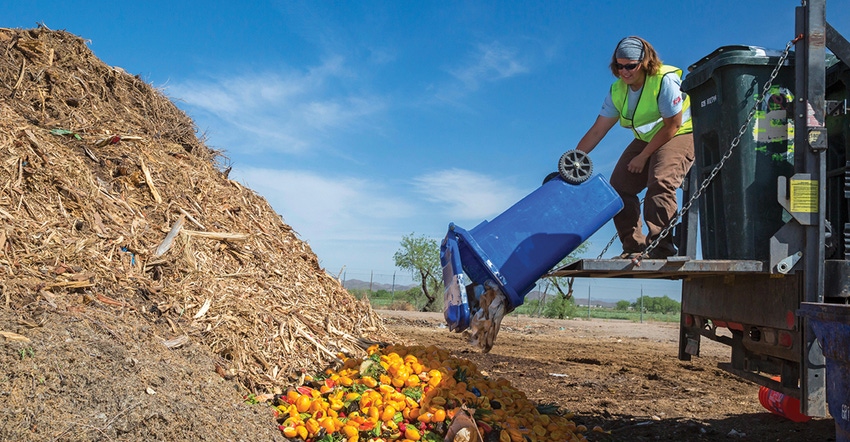Food waste data collection has been largely inconsistent over the past few decades. An increased focus on food insecurity and waste systems has improved data collection. U.S. Department of Agriculture (USDA) doled out $10.2 million to fund pilot projects aimed at food waste reduction and composting in 2022.

Food waste data collection has been largely inconsistent over the past few decades.
An increased focus on food insecurity and waste systems has improved data collection. U.S. Department of Agriculture (USDA) doled out $10.2 million to fund pilot projects aimed at food waste reduction and composting in 2022.
With the addition of funding from governmental, private and public entities, researchers across the globe are now honing in on solutions to food waste reduction. One such project dedicated to identifying and emerging trends has been a two-year effort at The Ohio State University (OSU).
"A consistent means of collecting data can provide a benchmark against which to compare local trends, particularly if a locality implements an intervention and wants to understand if the intervention helped the locality reduce waste when considered in the context of any prevailing national trends," explained Dr. Brian E. Roe, Van Buren professor at OSU's Department of Agricultural, Environmental and Development Economics.
The U.S. National Household Food Waste Tracking Survey has been conducted numerous times since 2021. The project is funded as part of the National Science Foundation's Multiscale RECIPES (Resilient, Equitable, and Circular Innovations with Partnership and Education Synergies) for Sustainable Food Systems. The survey is conducted at the Ohio institution with input from the multiple institutions and organizations involved in the NSF-funded network.
"We don’t have decades of data that can provide a consistent assessment of the amount of food wasted by households, but we now have about two years of consistently collected data on household food waste starting in early 2021," Roe said.
The online survey targets households throughout the 50 United States. The primary household member in charge of food buying and preparation performs a food waste audit over seven days and completes a detailed survey about the types of waste gathered during the period. Participants are asked to report the amount and the status of the waste - never opened, partially consumed, unused leftovers. Survey questions included unusual events that could have caused more waste during the time of data gathering and how often households eat out at dining establishments.
"When we calculate the national average waste amount, we weight the data to correct for any differences in key characteristics of the households such as the number of household members, income and race of respondent," he said.
Households generated more food waste in 2022 than in 2021, according to recent results, which could be attributed to the frequency in which households ate at dining establishments throughout the week.
"Those who returned to pre-pandemic levels of eating out tended to report more waste," Roe said. "There was also some pointers in the data that in 2022 respondents may have been discarding items stockpiled during the pandemic that may have gone unused."
WIth these results in hand, Roe and other researchers continue to gather data, which hasn't been as easy as filling out survey responses. Roe said that survey takers have tended to underreport the amount of waste generated at the household level, which is difficult to verify.
"A consistent means of collecting data can provide a benchmark against which to compare local trends, particularly if a locality implements an intervention and wants to understand if the intervention helped the locality reduce waste when considered in the context of any prevailing national trend," he commented.
Shopping frequency among households is also another factor that must be taken into account. OSU researchers discovered that those who shop multiple times per week reported more waste than those who go infrequently. Individuals tend to think grocery shopping more often leads to fresh items in the fridge, but spontaneous purchases could lead to more waste as items go forgotten or unused.
Despite the specificity of the survey questions, "we can’t disentangle the exact pathways with the data we have collected," Roe indicated.
Brian Roe will present more data, including early 2023 results, at the Food Recovery Forum at WasteExpo May 1-4 in New Orleans during the session "Food Waste Policy Models, Opportunities, and Best Practices; Solutions for Household Food Waste Reduction; Optimizing Food Waste Recovery."
About the Author(s)
You May Also Like




